Teams at Travelport benefit from practicing SAFe’s main event, PI Planning
Region: global
Lockheed Martin – Adopting SAFe for Agile Transformation in F-16 Product Development
Lockheed Flying the F-16 into the Future with SAFe: Evolving the Falcon Factory
Share:
Presented at the 2019 Global SAFe Summit, San Diego Oct. 2, 2019, The F-16 Fighting Falcon is the world’s most successful, combat-proven multirole fighter with approximately 3,000 operational F-16s in service today in 25 countries. In 2014, new production orders were drying out, and the F-16 production line was in danger of shutting down. Our solution to that problem was the adoption of SAFe to streamline the F-16 Product Development and Engineering in 2015. We overcame a lot of challenges along the way, and made rapid progress initially, but have plateaued. That should come as no surprise though. Our limited SAFe implementation showed us limited results. But we are turning this ship around! This year we have really taken stock of our Agile Transformation and implemented several ground-breaking initiatives that are changing our landscape. Lockheed has now started a new F-16 production facility in Greenville, South Carolina that is producing F-16s expected to operate to 2070 and beyond!
Back to: Customer Stories
Next: Bosch/ETAS Customer Story
Bosch / ETAS – Agile Transformation Using SAFe
Presented at 2019 Global SAFe Summit, San Diego Oct. 2, 2019
Share:
For over 130 years the name “Bosch” has been associated with forward-looking technology and trailblazing inventions that have made history. Bosch does business all over the world and is active in the most wide-ranging sectors. In particular, BOSCH is the largest supplier for the global automotive industry.
Dr Volkmar Denner, CEO of Bosch; “For Bosch agility is crucial, it allows us to adjust to the increasing speed of change around us. Agility allows us to remain in a position as an innovation leader.”
This video tells the story of how an enterprise of more than 70,000 knowledge workers and traditionally independent business areas have faced the challenge of an agile transformation and started an alignment to common a strategy for mobility solutions and the SAFe journey. It provides a deep dive into one of Bosch`s Business Units, ETAS, and shows what was already achieved by introducing the SAFe and focusing on current activities in Lean Portfolio Management and how the company organizational structure is being adopted as a consequence of the SAFe transformation.
Back to: Customer Stories
Next: PepsiCo Customer Story
PepsiCo’s UX-Led Approach – Scaled Agile Transformation
Presented at 2019 Global SAFe Summit, San Diego Oct. 2, 2019
Share:
How do the User Design (UX) principles of Simple, Human and Connected guide an ART to interpret and incorporate user-centric design (UCD)? What is the ideal operating model for UX design that includes discovery, design and delivery tracks? This talk will provide an overview of the hypotheses applied to deliver user-centric design within the Scaled Agile Framework® at PepsiCo.
Back to: Customer Stories
Next: Anthem Customer Story
Murex – Deploying Agility at Scale in Financial Software Using SAFe
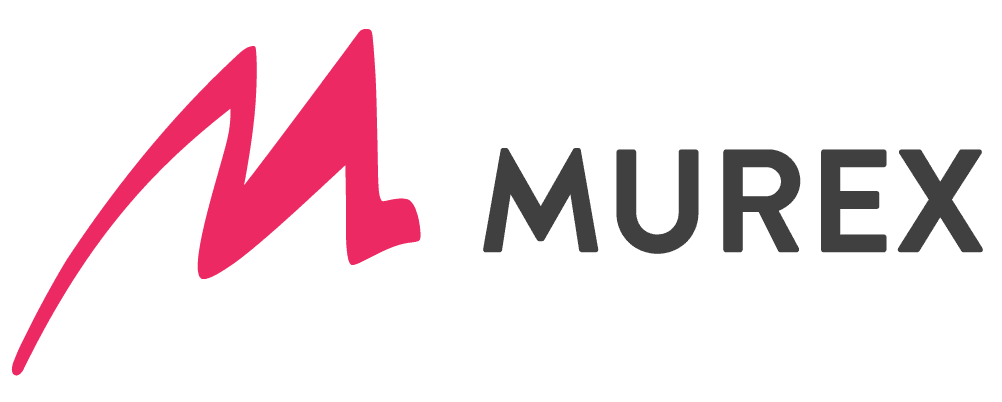
“Using SAFe to deploy agility at scale across our product factory has been fundamental to putting in place the mindset necessary for our transition to DevOps across our value chain. We still have further to go on this journey, but the benefits we see have proven that the SAFe framework was the right choice to accelerate our transformation.”
—Jonathan Coyle, Head of Agile Factory Operations
Challenge:
With its MX.3 platform in use across the globe, Murex sought to maintain and build upon its market-leading position while continuing to respond rapidly to support the changing needs of clients and global regulatory demands.
Industry:
Information Technology, Financial Services
Solution:
SAFe®
Results:
- 10X faster production-like testing
- A full functional testing cycle in just one hour
- 85% reduction in user story cycle time
- Time to release for internal test management system dropped from 37 man-days to two
- 95 percent of those asked would not want to return to the old way of working
Best Practices:
- Communicate continuously – You cannot over-communicate on your vision or the ‘why.’ Constantly reinforce the mission context.
- Prepare for challenges – Be ready to tackle the problems that emerge quickly as teams and trains accelerate.
- Anticipate changes in culture and people – Don’t underestimate the cultural impacts that agility at scale brings and be ready to invest in people.
- Invest in collaboration infrastructure – Murex invested heavily in digital solutions to help foster collaboration between distributed teams.
- Provide coaching and SAFe training – Coaching and training guides teams and individuals through the huge changes that they go through during the transformation and sets the stage for success.
Introduction
Every day, over 50,000 people in 60 countries rely on financial software from Murex. For more than 30 years, Murex has provided financial technology solutions for capital markets, from banking and asset management to energy and commodities. The independent, Paris-based company employs more than 2,200 people across 17 countries.
Murex’s flagship, award-winning platform, MX.3, supports trading, treasury, risk, and post-trade operations, enabling clients to better meet regulatory requirements, manage risk, and control IT costs. To maintain its industry-leading position, Murex continues focusing on building transformative technology, but faces numerous challenges in those efforts:
- Changing regulations across regions
- Complex and growing customer demands
- Legacy IT and processes
As well, Murex wanted to improve its quality and time-to-market in getting new capabilities to customers.
“The impact of technology and regulation on financial institutions means they need to find new ways to adapt faster,” explained Joe Iafigliola, Head of Americas for Murex. “To answer this challenge, Murex realized that we needed to provide a more flexible and Agile approach to project delivery. While this brings more predictability and convergence, it also allows greater flexibility to make changes that are required during a project.”

Pursuing Continuous Delivery the SAFe® Way

Murex chose to apply SAFe to both its product development and the infrastructure supporting product development for proper business agility, and thus created a Value Stream for each:
Value Stream #1 – Development of MX.3, its flagship product
Murex’s first Value Stream onboarded 700 engineers in eight ARTs for the development of its MX.3 trading, risk, and post-trade platform. This ART targets consistent Agile development practices, continuous integration, improved cycle time, and a faster feedback loop.
Value Stream #2 – Infrastructure evolution for MX.3 development and delivery
Murex created a second Value Stream to evolve the underlying development infrastructure, which includes development environments, versioning, build pipeline, and test management systems. Before SAFe, this portfolio released about every 10 weeks. Following the SAFe implementation, this timeframe has been reduced to two weeks.
Both Value Streams run with a DevOps flow. They follow sprint-based development on a two-week cadence with a continuous delivery pipeline. And batch sizes, iterations, and feedback cycles—all hallmarks of DevOps best practices—are all reduced.
Murex has also started piloting a DevOps approach for client rollouts and upgrades. They created a full development environment for customization of the MX.3 platform for clients. They now handle configuration, tests, test data, and infrastructure as code, and every piece is importable and exportable, and version-able in source control. Smaller changes flow to production more easily, reducing the challenges associated with large releases.
In pilot tests, the SAFe DevOps approach has shown promising results and is fostering more collaborative relations with clients.
“We found that, with a DevOps approach, validation timescales can be cut in half when compared to traditional methods,” added Hassan Kamal, Head of Software Engineering. “This unlocks huge potential in terms of delivering incremental value because we can react faster to changing market and regulatory requirements.”
Impressive Productivity Gains
As of today, Murex has trained more than 1,000 people in SAFe, or half the company, with teams distributed across its three development centers in Paris, Dublin, and Beirut. Its efforts have driven measurable progress across numerous benchmarks:
- 10X faster production-like testing – Client Delivery teams can now simulate 10 weeks of real production activity in a single weekend
- Complete testing in just one hour, instead of days – The full client delivery testing cycle, including environment provisioning, functional tests, and upstream/downstream interface validation dropped from five days to just one hour, making it possible to run this full suite to customize each new customer configuration
- 85% reduction in user story cycle time – Internal user story cycle for MX.3 platform development time dropped from 90 days to 15 days
- Lower release cost for internal IS – The time to release for the internal test management system dropped from 37 man-days to two
- Positive feedback from employees – 95 percent of those asked would not want to return to the old way of working (pre-SAFe)
Just as critical as the numbers, Murex’s people have embraced the mindset required to make the transformation.
“The most notable difference at Murex is a change in the way we plan and execute solution development. We do not commit to tasks—we commit to outcomes—and we let the teams decide how best to get there,” said Wissam Ghamroun, Head of EMEA Customer Delivery Services.
The company credits SAFe with helping it adopt best-practice engineering standards around test-driven development and CICD.
“Using SAFe to deploy agility at scale across our product factory has been fundamental to putting in place the mindset necessary for the transition to DevOps across our value chain,” Coyle said. “We still have further to go on this SAFe journey, but the benefits we see have proven that the SAFe framework was the right choice to accelerate our agility transformation.”
Share:
Back to: All Case Studies
Suggested Case Study: Westpac
Cisco IT – Adopting Agile Development – A SAFe Case Study
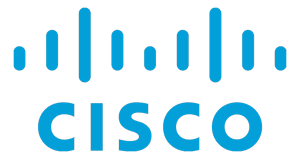
“Continuous delivery improved quality, increased productivity, and improved the employee experience.”
—Ashish Pandey, Technical Lead, CSIT Team
Challenge:
Cisco wanted to shift away from waterfall, and replace periodic major releases with continuous delivery of new features.
Industry:
Information Technology, Telecommunications
Results:
Cisco achieved significant improvements by using SAFe on two major projects:
- 16% drop in the defect rejected ratio (DRR)
- 40% decrease in critical and major defects
- 14% increase in defect removal efficiency (DRE)
- Improved employee satisfaction by eliminating the need for after-hours work and reducing meetings/calls
- 25 percent fewer quality assurance defects
- Sprints that ran more efficiently each subsequent time
Best Practices:
- Carefully build teams – Build teams with the best members from any location.
- Assemble the right tools – Cisco realized it could not have conducted regression testing every two weeks without test automation tools.
- Adjust as needed – For un-integrated or loosely integrated products, features or components, consider eliminating the Program level of SAFe.
Introduction
Cisco IT constantly looks for new ways to go faster and simplify. As part of its digital IT strategy, the Cisco Cloud and Software IT (CSIT) organization wanted to adopt more Agile development as a way to replace periodic major releases with continuous delivery of new features.

“Our goals are to speed up releases, increase productivity, and improve quality,” says Ashish Pandey, technical lead for the CSIT team.
Although a few small teams had adopted Agile techniques, waterfall was still the norm for teams that were large, distributed, or working on complex projects.
To solve these challenges, CSIT moved to the Scaled Agile Framework® (SAFe®) and immediately began applying scaled Agile practices on two major initiatives: their Subscription Billing Platform, and the Webex app for Samsung tablets..
Cisco® Subscription Billing Platform Challenge
For its Subscription Billing Platform (SBP)—which supports various subscription services—the company originally formed different teams for design, build, test and deploy. In waterfall fashion, each team began work once the previous team had completed their part.

- The separate tracks bogged down the process
- Release cycles exceeded three months
- They got late closure on requirements documents
- Teams missed delivery dates
- There were quality issues due to late integration cycles
- Teams worked long hours to make up for schedule slippage
The Solution
- On SBP, Cisco launched three Agile Release Trains (ARTs) in 2015: capabilities, defects and fixes, and projects.
- All three trains worked together to build and test small features within one SaaS component, while regularly delivering tested features to the system integration and testing team.
- Every day, the delivery team met for 15 minutes and determined action items.
Results – 40% Defect Reduction
Cisco delivered the new release of SBP on time and with all planned capabilities. When the company compared this release to those using waterfall, it found a 16 percent drop in the defect rejected ratio (DRR). Plus, critical and major defects decreased by 40 percent.
Continuous delivery also increased defect removal efficiency (DRE) by 14 percent due to greater collaboration among international teams, and by helping members identify opportunities for improvement during daily meetings.

The CSIT team attributes those quality improvements to several factors:
- Improving team collaboration and focus
- Enabling all team members to see current project status, promoting accountability
- Helping the three teams see beyond their own track
- Enabling teams to manage themselves
Additionally, the new way of working improved employee satisfaction by eliminating the need for after-hours work and reducing meetings and calls. Employees also saw how they fit into the bigger picture.
WebEx® App for Samsung
Challenge
In early 2014, the application for WebEx Meetings came pre-installed on Android tablets. Leading up to the release, developers had to work quickly to meet the release date, despite frequently changing requirements.
Solution
The team followed an Agile Scrum framework with three sprints for geographic rollout, the first two consisting of three weeks and the last of five weeks.
During planning, Cisco IT and others gathered requirements, and evaluated the readiness of environments, partners, and engineering and marketing teams.
Developers employed extreme programming, including test-driven development, where they first write an automated test case for a new function. Then they produced the minimal amount of code needed to pass the test and then refined code to make it simpler and easier to maintain.
Results – 25% Reduction in Quality Assurance Defects
On the WebEx app, Cisco reduced quality assurance defects by 25 percent. Plus, with developers checking code in several times a day, the business group reviewed new features sooner in the cycle than before. And each sprint ran more efficiently than the last.
Ultimately, Samsung sold more than 35 million tablets with the new app, creating wide exposure for the brand.
Share:
Back to: All Case Studies
Suggested Case Study: Royal Philips
Johnson Controls – Bringing More Engagement by Adopting SAFe
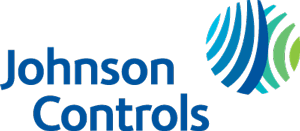
“SAFe brings so much more engagement, which has really been key for all parties. I wouldn’t want to do it any other way.”
—Rajbir Bal, Program Manager, Access Control
Challenge:
JCI’s access control division needed to improve coordination among firmware and software teams across three locations with the goals of improving time-to-market, quality, and engagement.
Industry:
Information Technology
Solution:
SAFe®
Results:
- The division releases at least 2-4X more frequently than before
- JCI reduced the size of its bug backlog by at least 3X
- Access control delivers on its commitments 100 percent of the time
- Customers/stakeholders appreciate the chance to provide feedback during the process—instead of at the end
Best Practices:
- Get help – Especially early on, partner with a consultant
- Train leadership – JCI trained resource managers, product management, and directors to get buy-in before moving forward
- Train SPCs – They serve as change agents and coaches
- Follow progress – JCI used automated Agile dashboards in Team Foundation Server
The partner that made it happen:
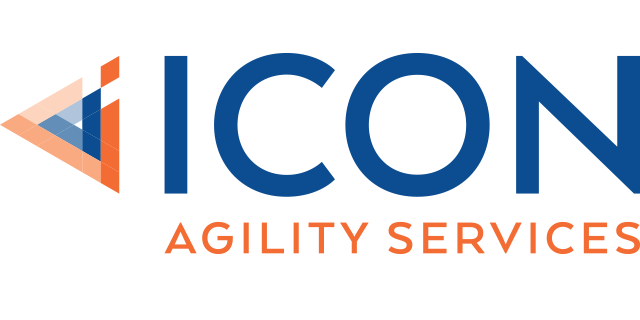
Introduction
Johnson Controls Inc. (JCI), a global diversified technology leader, serves customers in more than 150 countries and reports $30 billion in annual revenue. The company’s access control division develops systems to help buildings achieve maximum security while increasing efficiency and lowering costs.

Developing access control systems demands that firmware and software teams work together to deliver on a coordinated schedule. At JCI, those teams are spread across Southern California, Milwaukee, and India.
In 2014, the division began an effort targeted at improving time-to-market and the predictability of releases. They also sought to identify quality issues sooner, increase transparency, and raise team engagement.
“We were having very little success at agility planning, predicting releases and committing to and delivering on the timeline,” explained David Richter, Director of Engineering, Access Control. “We wanted to increase our flexibility and ability to react to change, and to react to our customer’s needs in a positive and respectful manner.”
But Richter and other change agents knew they would have to contend with several roadblocks along the path to SAFe transformation:
- Changing the established paradigm of working in waterfall
- Aligning teams in three disparate locations
Taking the SAFe route
JCI identified the Scaled Agile Framework® (SAFe®) as the most promising route for instilling lasting Lean-Agile practices.
“SAFe brought all the practices for us to start and then learn and adapt as we go,” said Rajbir Bal, Program Manager, Access Control. “It also forced us to have tough discussions early and throughout development—versus down the road when we got close to release.”
To gain leadership backing, the Director of Engineering gave decision-makers clear reasons for deploying SAFe and the expected outcomes. Concurrently, Scaled Agile Gold Partner Icon Agility Services trained leaders in Leading SAFe® so they would fully understand the Framework. This worked well as change agents succeeded in securing executive backing.
They followed with Leading SAFe® for directors, product managers, and resource managers, bringing together 15 individuals from California, Milwaukee, and India. Next, they defined the structure of the various teams that would begin the first Agile Release Train (ART), and put all team members through SAFe® for Teams training.
Two individuals, including Bal, earned certification as SAFe® Program Consultants (SPCs) in order to serve as change agents and coaches. Following certification, they became authorized to deliver SAFe® Scrum Master, SAFe for Teams, and SAFe® for Product Owner/Product Manager training.
In addition to Bal, other coaches included engineering managers and the director of engineering, while Scrum Masters became coaches at the team level. When it was apparent that Scrum Masters and Product Owners had an overlap of responsibility, or at least their understanding of it, Bal brought them together in one location for a custom Product Owner/Scrum Master workshop to clarify roles and responsibilities.
Navigating the path to alignment
In 2015, JCI launched its first ART at a Program Increment (PI) Planning meeting with about 100 people and followed Essential SAFe. Bal and others knew they were taking the first steps toward progress, however, early planning events felt chaotic.
“The first two PIs were not fun and we did not come out with committed plans,” Bal said. “Some features were not well defined, people were not clear on the process, and we needed more time to break down user stories.”
Bal attributes the discord to a couple of factors. The company included some user interface teams in that first ART, but not others, which caused misalignment. Geographic distribution also created challenges.
For more cohesive teams, they tried several approaches. First, they brought representatives from India to present on behalf of their teams. However, in doing so, they lacked the voices of those not in attendance.
Instead, they decided to start concurrent planning in the U.S. and India, with India beginning 12 hours ahead due to the time zone differences. As teams in India complete their planning days, those in the U.S. come in early to overlap with them. The Indian teams present their planning via videoconference. The same goes for day two of planning. American teams presented in what was the evening for their Indian counterparts.
Richter notes that, in those early months, JCI attempted to modify the Framework. Only some teams attended training and the company followed three-week sprints. “We tried to make changes to SAFe, but that was a disaster,” he said. “After that experience, we then started following SAFe exactly.”

Many people also insisted on continuing lengthy documentation of functional and design specs, after 50 years of following this practice. But that changed over several PIs. “We realized that documentation is not adding value,” Bal said. “Instead, we switched more to flow diagrams and writing code versus paragraph after paragraph of specs.”
With these tweaks, subsequent PIs progressed more smoothly as everyone became accustomed to the ceremonies and practices of SAFe. They made better use of their time at PI planning events. By the third PI, all teams also joined the train.
Over time, JCI found it more feasible to modify the framework to its own processes. In the access control division, developers must follow a specific process. They found that SAFe allowed them to implement Lean-Agile methods that worked in conjunction with these required processes. Other modifications included concurrent planning for India and the U.S., and face-to-face meetings between Product Owners and Scrum Masters to walk through the features radiator.
Acting like ‘One Big Team’
Richter and Bal saw a number of positive outcomes emerge during the transformation:
- Increased ownership – Entire teams committed to goals in PI planning and delivered on those goals
- Less technical debt – Issues were identified earlier in development, which allowed for course corrections along the way, instead of at the end of development
- Greater participation – All levels joined in, including business partners and architecture
- Earlier decisions – Using the Lean Startup Cycle, they make go/no-go decisions sooner in the cycle than they had before practicing SAFe
- More automation – Automation reduced the overhead of testing and corrects quality issues earlier
- Enhanced transparency – People bring up issues sooner, rather than at the end of a PI
- Greater teamwork – Inter-team collaboration improved as well, with individuals reaching out to help others when needed
“We started acting like one big team, instead of a bunch of teams of teams,” Bal said. “We saw more engagement at all levels.”
Driving time-to-market, quality, predictability
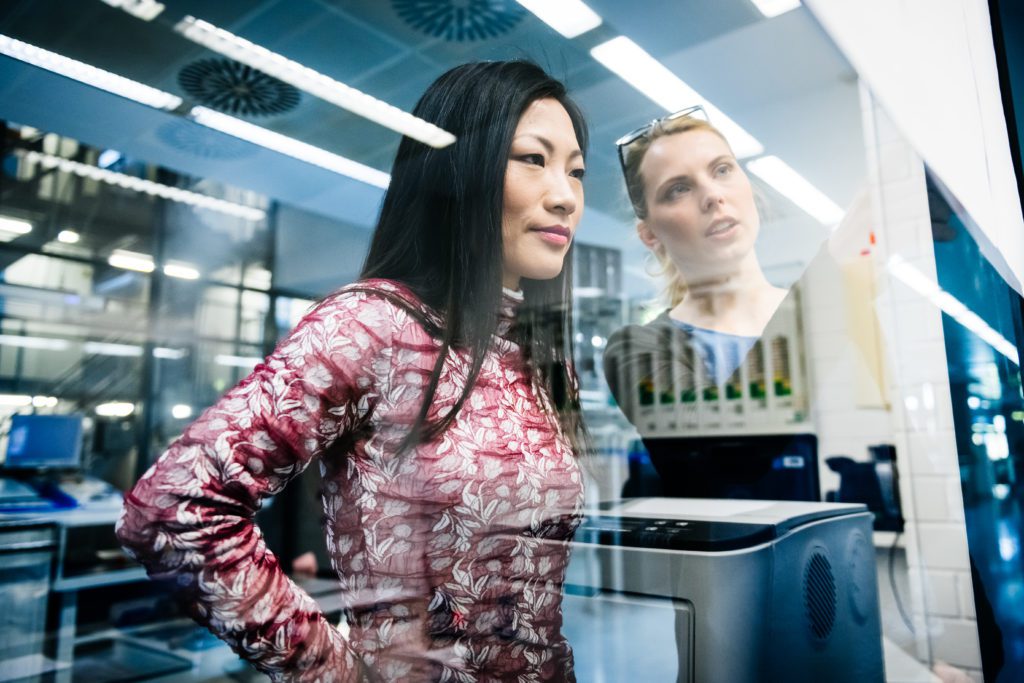
After early growing pains, JCI began seeing the results of its efforts:
- Faster time-to-market – The division releases at least 2-4X more frequently than before
- Higher quality – JCI reduced the size of its bug backlog by at 3 times
- Predictability – Access control delivers on its commitments 100 percent of the time
- Customer satisfaction – Customers appreciate the chance to provide feedback during the process—instead of at the end
“This wasn’t an easy process for us,” Bal said. “It takes time getting everyone jelling PI over PI. But SAFe brings so much more engagement, which has really been key for all parties. I wouldn’t want to do it any other way.”
For more details on JCI’s Essential SAFe implementation, download the supplemental PowerPoint presentation.
Share:
Back to: All Case Studies
Suggested Case Study:
Deutsche Bhan
EdgeVerve Systems – Agile Business Transformation Using SAFe

“SAFe was the right fit because of the dynamics and goals at EdgeVerve. It helps bring the alignment and cultural change needed to deliver faster results in an organization with many dependencies across products.”
—Dr. Ronen Barnahor, Head of Agile Business Transformation, EdgeVerve Systems
Challenge:
With releases every 6-18 months, the company set a goal of further improving time-to-market, quality, flexibility, and predictability.
Industry:
Information Technology
Results:
- Release time improved by 50 – 66%
- Planning every 10 weeks sharpens predictability
- Feature cycle time went down by 50 percent
- The cost per feature point dropped by eight percent from one PI to the next
- Reduction in escaped defects and increased customer satisfaction
Best Practices:
- Managers first – By beginning training with managers, EdgeVerve gained essential buy-in that helped influence the C-level and team level
- Merging Testing and Engineering – Bringing these groups together reduced what were distinct silos
- Common cadence – EdgeVerve kept everyone on a common cadence, even before bringing all teams into the Framework
- Hybrid model of implementation – ARTs and managers of non-ARTs aligned on the same cadence and planning activities
Introduction
Banks across 94 countries, serving 848 million consumers, rely on Finacle, an industry-leading universal banking suite from EdgeVerve Systems Ltd. A wholly-owned subsidiary of the global IT company, Infosys, EdgeVerve develops software products that enable businesses across multiple industries to innovate, accelerate growth, and have deeper connections with stakeholders. Gartner and Forrester consistently name EdgeVerve at the top of their rankings for banking platforms.
In 2015, the company set an aggressive goal of improving time-to-market, quality, flexibility, and predictability.
SAFe: a framework for faster results

For guidance, the management brought on Dr. Ronen Barnahor, now Head of Agile Business Transformation. Barnahor recommended the Scaled Agile Framework® (SAFe®) to help instigate real change, quickly.
“Our mission is to adopt a Lean and Agile mindset and practices, and become a learning organization focused on continuous improvement to provide better value to our customers,” Barnahor says. “SAFe was the right fit because of the dynamics and goals at EdgeVerve. It helps bring the alignment and cultural change needed to deliver faster results in an organization with many dependencies across products.”
Prior to adopting SAFe, the teams at EdgeVerve were working in cadence, however, their approach wasn’t effective in meeting new organizational goals.
Building a coalition from the ground up
To bolster internal buy-in, EdgeVerve appointed Jasdeep Singh Kaler, an AVP and 20-year veteran of the company, to help Barnahor lead the effort. Through a contest, the transformation earned the name “Mach 1”—a nod to the importance of speed.
In alignment with SAFe, EdgeVerve began with training, choosing first to focus specifically on managers. VPs and directors, and about 30 leads across all functional areas attended two days of Leading SAFe®. The SAFe training created a buzz about the agile transformation and gave the C-level confidence that moving to SAFe was accepted by internal leaders. By the end of the class, participants signaled they were ready to move forward with SAFe, with confidence scores of 4 and 5.
With positive feedback from leaders, C-level executives attended a one-day management workshop that included principles from Leading SAFe. There, they set implementation goals and approved the new direction. Knowing they would begin with the Finacle banking solution, they identified dependencies, defined all Value Streams and established who would join in the first two Agile Release Trains (ARTs).
“This was a crucial meeting with leads from product strategy, delivery, architecture, and testing, to help them embrace the concepts of the Value Stream and the ART, optimize the whole process, gain a systems view, decentralize decisions, and more,” Barnahor says.
Quick Wins
In April 2016, EdgeVerve kicked off the first Program Increment (PI) using SAFe with a 2-day planning meeting in Bangalore, India. The event brought together 60 individuals from multiple locations across India. The CTO attended, sending a message about the importance of the change for EdgeVerve.
In subsequent ART launches and PI planning events, the heads of engineering, product strategy, product management and other senior leaders participated with great commitment—bolstering the adoption at a grassroots level.
The event itself excited and motivated team members: “We had fun as a team in PI planning and that enabled us to do better work,” says one team member.

Hybrid implementation model—ARTs + Non-ARTs
As the company launched two ARTs, it did so with just two coaches. For that reason, EdgeVerve continued running non-SAFe teams on the same cadence—in what it calls a “hybrid model.”
“We didn’t have the coaching capacity to structure everyone into SAFe, but they all aligned on the same cadence with a centralized backlog,” Barnahor explains.
While EdgeVerve began implementing SAFe, managers of other products outside of ARTs were trained concurrently in Program-level activities.
Under the hybrid approach, all product teams (ARTs and non-ARTs) aligned in several ways:
- The same cadence (sprints and PI)
- Working in IBM Rational Team Concert
- Pre-planning + PI Planning (For non-ARTs, only managers joined in PI planning)
- Execution (For non-ARTs, there was no coaching. Leads managed the work as previously but with a focus on demos in cadence with ARTs.)
- Product and solution-level demos
- Retrospectives (In non-ARTs, only managers joined.)
“The hybrid model of implementation of a full ART plus managers first in non-ART teams contributed to faster alignment and predictability across products within the integrated banking solution,” Barnahor says.
Very quickly, teams began delivering on cadence, demonstrating early value to management. SAFe also sharpened visibility, enabling them to predict more accurately. As a result, the Product Management Organization began to understand the power of “velocity” as a prediction metric and began using the Agile dashboard that EdgeVerve developed.
Changing the Culture
As EdgeVerve launched trains, the company concurrently focused heavily on changing the culture, with the belief that “culture eats strategy for breakfast.” According to Kaler, since EdgeVerve focused on ‘managers first,’ these individuals became key influencers in the cultural change. The main focus was around breaking the silos, establishing common ownership on quality, managing and improving through data, and an emphasis on outcome and business value instead of on utilization.
The new, common terminology of SAFe (ARTs, ceremonies, and cadence) ensured everyone spoke the same language. With a common language, they could more easily understand expectations and minimize misunderstandings.
“From a change management perspective, everyone understood that EdgeVerve had embarked on something important at the organizational level that is based on a proven industry framework,” Barnahor says. “We had fewer arguments on definitions. I told them, ‘Let’s adapt SAFe definitions and practices, observe the impact on the ground during execution, and then change. Why reinvent the wheel?’”

The company also altered its success measures to help influence behavior, asking questions such as…
- Are we delivering desired value to customers?
- Are we on time? If not, when can we deliver the committed scope?
- Are we on scope? If not, what we will not deliver on due date?
- Are we on top of quality?
- Are we on flow? Any bottlenecks? Starvation? Backlog readiness for the next PI? What is the average cycle time?
- Can we predict well?
- How do employees feel about the change?
As attitudes changed, EdgeVerve collected feedback from the field and shared positive comments from team members and managers widely on posters and in videos—with the goal of spreading enthusiasm.
Additionally, the company adjusted the organizational structure to support the change. From developer to head of engineering, EdgeVerve reduced the number of organizational layers from seven layers to just four layers.
Perhaps the biggest difference came in moving the distinct testing organization, which was under delivery, into engineering—a decision that quickly improved relations between developers and testers. In line with SAFe, testing also now happens concurrently with development with greater focus on acceptance automation.
Reducing cycle time, increasing quality
Today, the company runs eight ARTs with approximately 800 people across three value streams and one portfolio. They launch a new ART every six weeks. At the same time, they run five teams of teams that are not part of the SAFe transformation.
Less than a year after deploying SAFe, EdgeVerve reported significant gains:
- Reduced time-to-market – For large enterprise products, release time dropped from 12 – 18 months to six months, and for small products, from six months to three months
- Improved predictability – The company plans consistently every 10 weeks, which increases flexibility for changing scope with minimal cost
- Expedited feature speed – Feature cycle time went down by 50 percent
- Elevated efficiency – The cost per feature point dropped by eight percent from one PI to the next
- Fewer defects – The company significantly improved early detection of defects, leading to fewer escaped defects and increased customer satisfaction
Dissolving silos
As the PIs progressed, team members could clearly see the advantages of the new approach. Most notably, communication and collaboration improved, with evidence that silos were dissolving.
“The way teams were working, even a minor downtime was clearly a cascading effect in the team’s progress,” says one team member. “Teams identified it, they came up with solutions, and they worked together.
“If code was not working, we got the right contacts, spoke to the code team and got the issue resolved,” says another team member. “This is a big change from the software developer’s perspective on how they approach their work.”
“The developer-tester relationship was better,” says another. “You can directly check with them for the issues you’re facing.”
Additionally, anonymous participant surveys reflected progress. The company asked approximately 300 people about the impact of SAFe. Most notably, there was an 89% improvement in trust and communication across different functions while 73% believe that SAFe helped increase productivity/throughput.

Even as EdgeVerve sees positive results and culture shifts, transformation leaders find it is an ongoing process. With demonstrated results, they gained backing to hire more coaches. Looking ahead, the main challenge, Barnahor says, is middle management’s mind-set—transforming managers to act as Agile leaders and mentors to the teams by focusing on an Agile leadership program.
“It’s a transformation of hearts and minds,” Kaler says. “We made sure that managers believed in what we’re doing and slowly the culture is changing.”
Share:
Back to: All Case Studies
Suggested Case Study:
PlayStation Network
Air France-KLM – Accelerating Agile Adoption with SAFe

“We wanted to experiment and demonstrate Agile principles and practices across domains. By empowering each business domain, acknowledging specific contexts in domains, fostering sharing, and ‘try and learn,’ SAFe has helped us get on the right track to success.”
—Claire Charbit, Program Management NWOW Agile Adoption, Air France-KLM
Challenge:
Air France – KLM sought to scale Agile practices companywide to improve time to market and efficiency, but must contend with specific contexts and regulations in the different businesses of the airlines.
Industry:
Transportation, Aviation
Results:
- SAFe teams released 17 times in the live environment in seven months compared to every six months previously
- On average, SAFe teams release 20% more effectively than waterfall teams
- The company gained 20% market share in the small and medium logistics market alone
- On one offering, the company exceeded expectation by 25%
- Air France – KLM is more intimate with its clients
Best Practices:
- Focus on Transversal Topics for a sustainable adoption – “From day one, make them part of the adoption,” Moreau says. These topics affect all domains.
- Let domains and teams define objectives – Teams are more committed and empowered if they set their own goals
- Train continuously – The Core Team regularly holds Agile Booster workshops to help with specific adoption challenges such as how to deal with conflicting priorities from both airlines, and what does it mean to have an Agile mindset?
Introduction
One of Europe’s largest passenger airline groups, Air France – KLM operates up to 2,200 flights daily and carries over 93 million passengers annually. The company’s five airlines—Air France, KLM Royal Dutch Airlines, Transavia, HOP! Air France and Joon—cover 320 destinations across 114 countries.

In a highly competitive industry, where information systems can be strategic competitive assets, Air France – KLM set out to reduce its time-to-market with business applications. To do so, the company decided to improve the business/IT collaboration by breaking down silos and expanding Lean-Agile practices.
“Before, in moving from waterfall to Agile, we were not able to make the leap on a broader scale,” says Edwin Borst, Program Management NWOW #agile Adoption, Air France – KLM.
Achieving its goals would require bringing together diverse cultures at French and Dutch offices, as well as contending with diverse contexts, operational constraints or regulations across the different business domains.
An Agile Adoption Empowering Business Domains and Teams
After the successful launch of three ARTs in the Commercial Digital business domain in the late summer of 2016, the company decided to leverage this success and create a broader-scale adoption. Pieter Bootsma, Executive Vice-President of Commercial Strategy at Air France – KLM, noted: “We can all benefit from Agile in the whole group and not only at Commercial Digital.” So, in late 2016, the company chose to foster and accelerate the adoption and scaling of Agile practices.
Prior to launching the broad SAFe adoption, a small group of transformation leaders spent several months defining the scope of the deployment, the way the adoption would be conducted, and preparing for the adoption of SAFe on a larger scale. The leaders decided to adopt Lean-Agile principles and values in the way the program would be set up and run. The goal: demonstrate the mindset and practices, and see the benefits of this approach in a Change Management context.
- Empower each business domain via its own self-organized, multidisciplinary, “Agile adoption team”
- Deliver the change in short cycles, enabling experimentation and quick adaptation
- Start small with minimum viable products (MVPs)
- Share and learn from each others’ domains
- Differentiate and adapt to each domain’s specifications and context

In late 2016, the company chose the Scaled Agile Framework® (SAFe®) to foster and accelerate the adoption and scaling of Agile practices across the various business domains.
“In order to manage our Agile adoption program across 11 business domains within Air France – KLM, we formed an Agile Release Plane (ARP, modified to fit the industry), inspired by SAFe,” says Didier Lavielle, Program Management NWOW #agile Adoption, Air France – KLM. “SAFe gives us the framework we have been missing while at the same time empowering each business domain to define their own way to reach their goals.”
Each business domain (Commercial, Cargo, Flight and Ground Operations, Engineering & Maintenance, Finance, Human Resources) joined the ART with its own change team—named Agile Adoption Team—and self-organized as a product team. As a mix of IT and business, the Adoption Team defines the specific objectives, approach, and steps to take in its domain: people to train, Agile product teams to form, coaching needed, communication plan, monitoring progress, and more.
The company formed “Transversal Tracks,” (groups that tie into all business domains), which joined the ART: Human Resources (e.g. role description, training, and coaching), Finance and Portfolio Management (IT investment processes), Tooling and Capabilities, Communication, and “IT Readiness.” This setup brought value to the 11 domains by not having to reinvent the wheel and ensured consistency in harmonized solutions.
Air France – KLM engaged with BlinkLane Consulting for guidance and training. Around 150 team members in the Agile Adoption ART, from the various business domains and Transversal Track teams, attended Introduction to Agile training, with about 50% of them taking the Leading SAFe course.
Some of the Transversal tracks went through specially designed workshops regarding Lean Budgeting, Agile KPIs & Reporting, and Agile HR, for instance. Those supporting the various adoption teams either attended the SAFe Scrum Master training or were already certified SPCs. So far, more than 300 colleagues from the Adoption ART and from the regular ARTs have followed the Leading SAFe training.
Aligning the Stakeholders on a “Definition of Awesome”
Prior to kickoff, all business domains and Transversal Track groups aligned on a common definition of awesome with four themes:
Agile Enterprise – In the Air France – KLM enterprise, the autonomous, stable, and cross-functional teams are the cornerstones of the organization for driving innovation and continuous improvement. The Transversal processes support and stimulate an Agile way of working and mindset at all levels. This allows the company to focus on continuously maximizing quality and delivering value to the customer.
Value Creation – The Agile adoption aims to create more value—for customers and employees. Quality as well as effectiveness go up. The company succeeds by driving down the time-to-market, and increasing the Net Promotor Score.
Leadership – Air France – KLM develops servant leaders who empower Agile teams and value streams. They engender trust, work with a clear purpose, and provide direction to all levels of the Agile Enterprise. They are recognized for their Agile leadership, enabling others to succeed and drive the organization for continuous improvement. They focus on goals instead of tasks.
Employee Engagement – The organization is recognized as a best place to work. As a result, it attracts talented people. It works closely with customers. People feel responsible and autonomous for their products and results. Employee satisfaction is high and demonstrated by EPS (active promotors).
Big-Room Kickoff in Paris: PI Planning Event #1

The company officially kicked off the Air France – KLM New Ways of Working #agile ART at the first PI planning event in March 2017 in Paris. The Release Train Engineer (RTE), Odile Moreau from BlinkLane, was part of a small group of transformation leaders called The Core Team. The team, which includes three from Air France – KLM and three from BlinkLane, helps foster the adoption and structure; organize the program and its events; support the domains and the Transversal tracks; and monitor the progress and the results.
The five Transversal tracks, 11 business domain adoption teams, and the Core Team formed the ART, with 150 people. The company’s group CIO, Jean-Christophe Lalanne, and Commercial Strategy EVP, Pieter Bootsma, attended as executive sponsors and set the tone for the importance of the initiative.
At the first PI event, Air France – KLM introduced a logo created specifically for the program, which added strategic emphasis.
Team members from France and the Netherlands came together, bringing distinctive cultures and very diverse states of Agile: some were new to Agile principles and some brought several years of experience
“Although this approach and the PI Planning event was new for most people, everyone was really driven and motivated to share experiences, learn from each other, try and experiment, and work toward results,” Lavielle says.
Yet despite that excitement, many were hesitant to break out of their own groups and talk with those they had never met. Thus transformation leaders requested that anyone adding yarn to the program board—indicating dependencies—discuss it directly with the individuals involved.
As the first PI progressed, teams achieved about 60 percent of their stated objectives, on average. In leading up to the second PI, they applied the lessons learned and set more accurate, quantifiable objectives.
At the start of the second PI, Air France – KLM began a new practice of having each business domain and Transversal Track share its business results with the entire group as a PI begins. At the same time, this served as an opportunity to Inspect and Adapt what worked and what didn’t.
By the third PI, in the fall of 2017, Air France – KLM had grown to 208 product teams and eight ARTs across Commercial Digital, Cargo, Commercial, and AF Flight Ops. The KLM HR division and the AF Ground Services have both organized Value Stream workshops to either launch new trains or reorganize their current Agile teams into an ART. The same applies to Digital Commercial. Following on the continuous Inspect & Adapt, Commercial Digital will also reorganize its current ARPs to allow for more alignment on the business objectives and improve its delivery model.
Lessons Learned and Best Practices
Along the way, they learned a number of lessons to improve their efforts going forward:
- Have an approach for dealing with the diversity across domains, both in their Agile maturity and in their specific context and constraints (operational, security, and regulations)
- Establish strong ownership in each business domain via an individual adoption team
- Since most of the dependencies lie between Transversal Tracks (HR or Finance impediments) and business domains, co-create solutions for Transversal topics that facilitate exchanges and encourage learning from each other
- Actively address the challenge of changing the managerial mindset and leadership styles
- Understand that setting realistic goals for the next 15 weeks will be difficult for most, as is learning to set smaller, more realistic goals
- Encourage individuals to ask for help from someone in a Transversal Track or the Core Team
- Ensure that the team members who are not 100% dedicated and co-located commit to objectives and organize in a way to still be able to work together and produce results
- Ask for regular feedback to respond to uncertainties and come up with valuable results
- Leave personal egos at the door and achieve common objectives
Investing in Role-Based Training
Where it can, the company trains with the SAFe curriculum. All RTEs go through SAFe Release Train Engineer training. Scrum Masters with the PSM certification are offered the SAFe for Scrum Master training and certification when joining an ARP. The same applies for Product Owner. Team members also attend SAFe for Teams when they join an ARP. Additionally, the company developed training and workshops for Lean Budgeting, using the Weighted Shortest Job First, and other practical guidelines.
A community of 40 coaches support the effort at various levels: teams, domain, adoption, and enterprise. This community is growing in maturity and results. In the third PI, the company will focus on internalization and growth of the coaches, ensuring a more sustainable and economical support for the Agile community.

Results: 20% More Effective Delivery
Since deploying SAFe, Air France – KLM notes greater collaboration between business domains and Transversal Tracks. Within three months, their efforts began paying off in business results in the Cargo group:
Time-to-market – Each ART team delivers on its promises every three weeks. Since moving to SAFe, the company released 17 times in the live environment in seven months compared to every six months previously.
Quality – Of the 17 releases, the company had to delay just one due to a major incident
Productivity – SAFe teams deliver, on average, more than 20% more effectively than waterfall teams
Adaptability – With a PI cycle of 12 weeks, Air France – KLM has been able to pivot its vision three times in the past year, allowing the company to tap into new business opportunities much more quickly and easily
Market share – The company gained 20% market share in the small and medium logistics market alone with this flexibility
Predictability – The velocity of ARTs builds in more predictability and enables teams to take ownership and show greater craftsmanship. Team stability is also an important success factor in results
Business value – On one offering, the company exceeded expectation by 25%
Employee satisfaction – PI Planning results in better transparency and autonomy for the teams. Seeing the vision in the Cargo group encourages team members to contribute to the business value and increases their work satisfaction, as well as collaboration between business and IT
Customer satisfaction – Air France – KLM is more intimate with its clients. All Product Owners from the business side have a greater understanding of the demand. Going live with small changes and new functionality every three weeks gives them a faster feedback loop and more rapid pivoting, enabling groups to deliver greater value in its IT solutions
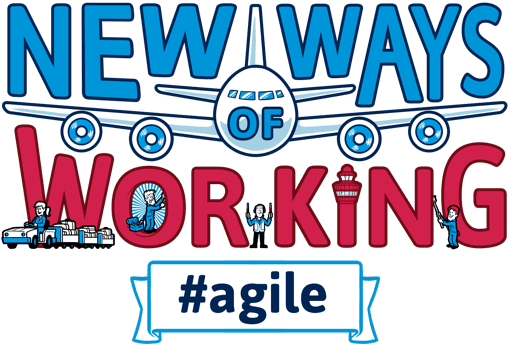
Air France – KLM looks forward to seeing ever-greater progress as it moves toward DevOps, allowing the ARTs to deliver end-to-end with an integrated team.
“We have started experimenting more with weighted shortest job first (WSJF) in our priority at the Features level,” Moreau says. “We also want to harness the work with Portfolio Management and Lean budgeting.”
Share:
Back to: All Case Studies
Suggested Case Study:
Deutsche Bhan
Fannie Mae – Adopting Agility in Business Using SAFe

“SAFe provided the agility, visibility, and transparency needed to ensure we could integrate with numerous other efforts, get predictable in our delivery, and ensure timelines are met.”
–David McMunn, Director of Fannie Mae’s Agile COE
Challenge:
Within three years, the organization would need to stand-up an entirely new business model that would change the way securities are issued to the market—and do so within aggressive timelines.
Industry:
Financial Services, Government
Results:
- Releases now happen every month, instead of once or twice a year.
- They integrate reliably every two weeks.
- Fannie Mae reduced delivery risks.
- The organization reduced the defect rate substantially.
- Teams now deliver more than 30 attributes per sprint compared to 2-5 before.
- Velocity increased from 10 story points to more than 30.
Best Practices:
- Sync cadence – Establishing a common cadence was critical to success. Engineering practices must evolve in order to comply with bimodal governance.
- Work on database modeling upfront – For any data-heavy effort, perform advance work on database modeling to avoid the impact of changes identified later in the sprint.
- Develop a playbook – Such guidance reduces rework for multiple teams working in parallel.
Introduction
Fannie Mae is the leading provider of mortgage financing in the United States. Operating under a congressional charter, Fannie Mae—and its sibling organization Freddie Mac—play an important role in the nation’s housing finance system; they provide liquidity, stability, and affordability to the mortgage market.
Coming out of the housing crisis in 2013, Fannie Mae recognized that the lending environment it was moving into required it to be even more responsive to meet rapidly changing customer needs. Further, Fannie Mae recognized that agility was critical to achieving this objective—not just in technology, but across the organization.
In January 2015, Fannie Mae was preparing to align with guidance provided by the Federal Housing Finance Agency (FHFA) and Congress, under a new joint venture named Common Securitization Solutions (CSS). As part of this effort, Fannie Mae undertook an initiative to transform some of their key internal business processes to align with CSS to build a universal securitization platform for the issuance and management of mortgage-backed securities.

Within three years, Fannie Mae planned to develop an entirely new business model that would change the way securities are issued to the market—and do so within aggressive timelines. More than 20 development teams, encompassing over 300 individuals, were needed to integrate development and testing efforts across 30 assets. As Fannie Mae prepared to implement this change, the organization encountered several challenges as the new model was being defined based on continuously evolving requirements.
“When you’re doing a large-scale integration with a lot of data, the number-one factor for success is early integration and early testing,” says Atif Salam, Director of Enterprise Data at Fannie Mae. “The federal mandate required us to mitigate risk from the get-go, and we realized early on it would not be possible following a waterfall approach. There was no better way for us to mitigate that risk than to adopt Agile.”
Overcoming Initial Roadblocks
Enterprise Data’s efforts to adopt Agile uncovered several challenges, both internal and external:
Challenge #1: No Agile capability evident for the initial two teams at the outset of the Enterprise Data initiative.
The first Enterprise Data teams were brand new to Agile, the Scrum methodology and, having been formed specifically for this initiative, working with each other.
Prior to adopting SAFe, Enterprise Data developed a standard on-boarding approach and entrance criteria for standing up new teams. Additionally, external Agile subject matter expertise was brought in to train and work with the teams, and an Agile Mature Model (AMM) was created to baseline behaviors and practices, as well as identify areas for optimization.
Thereafter, once the decision had been made to adopt SAFe, the program began to work through the SAFe Readiness Checklist. The AMM was used to set target benchmarks that all program teams were required to meet in order to ensure there was sufficient capability in place from which to scale.
Challenge #2: At the outset of the Enterprise Data initiative, a Scrum team could only complete a single user story due to inflexible architecture, end-to-end testing challenges, and numerous build constraints. Further, it was typical for the work to be gated by subject matter expertise between developers who viewed data attributes as a data point, comprised of both sourcing and vending complexities, that could only be implemented sequentially.
In response, technical leads focused on eliminating constraints, reducing complexity, and optimizing workflow. Specifically, Technical Leads worked with the teams to leverage cross-functional team/paired programming constructs to augment technical expertise. As a result, the teams began to view data attributes not as a data point, comprised of both sourcing and vending complexities, but rather as having two distinct pieces of business value, specifically sourcing and vending.
Additionally, they made the effort to move system integration testing (SIT), as well as user acceptance testing (UAT), left into the Scrum team. As a result, and over time, each team began to complete multiple user stories within a given sprint. Additionally, the organization adopted an emergent design mindset, formed cross-functional Agile feature teams, and aligned to a common cadence that synchronized their activities (e.g. sprint planning, Scrum-of-Scrums, sprint reviews).

Challenge #3: At the outset of Enterprise Data’s journey, complexity was further complicated by the fact that teams were required to develop and integrate their code in the same mainline, thereby replacing branching as an accepted technical practice. Additionally, Fannie Mae required new release traceability management that would satisfy corporate and federal governance requirements.
To address these challenges, technical leads and shared services focused on building a continuous integration capability, across all teams, using the same codebase. The organization had always had application lifecycle management (ALM), however, it needed to rethink continuous integration to realize true efficiencies. Over the course of 10 months, the organization focused on leveraging automation to reduce the time to implement builds from once every six months to multiple times a day.
Additionally, Enterprise Data adopted behavior-driven development engineering practices for traceability, automated testing, and prototyping.

Challenge #4: Upstream technical dependencies specific to architecture, database design/modeling, and test data provisioning prevented the teams from completing a single user story within the two-week sprint cadence.
In addition to the technical challenges the teams were facing, there were also multiple upstream dependencies on architecture, data modeling, and test data management that they had to resolve before a User Story could be implemented by a team working in a two-week cadence.
Initially, working ahead of the teams, a group of business analysts were assembled and assigned to groom the program backlog sufficiently so that User Stories met, or exceeded, 80% of the sprint team’s Definition of Ready. Despite this focus, however, there was barely enough ready work in the program backlog for the teams to bring into their respective sprint planning. This was due to the lead times required to resolve upstream dependencies as well as the need to respond to continually changing requirements.
In preparation for scaling, Enterprise Data worked with their business stakeholders to create a roadmap of features spanning one business quarter. Simultaneously, they focused on optimizing backlog health, sufficient in depth to support the Agile teams, for at least two consecutive sprints. Additionally, adopting a system perspective, the entire value stream was analyzed to better anticipate, and mitigate for, internal/external technical dependencies.
Challenge #5: The organization’s culture was accustomed to working within a traditional implementation methodology.
At the outset, Fannie Mae had a traditional command and control culture, supported by a broader ecosystem of corporate functions that had to change to support Agile. Those leading the change made a significant effort to work with leadership and management to pivot from the traditional role of directing delivery to becoming Lean-Agile leaders and critical change agents, both supporting the teams as well as modeling the values and principles of the Agile Manifesto.
As already noted, leadership and management changed their focus to clearing impediments impacting the teams. Additionally, they influenced corporate functions to align in support of Agile, get the business integrated and involved, as well as to put the pieces in place to create an environment focused on continuous learning. “Historically we would have seen challenges as failures in requirements or development rather than opportunities to fail fast and learn, and improve,” Salam explains.
While still new to their roles, the Lean-Agile leaders infused a sense of purpose in the teams and gave them autonomy to implement the work while decentralizing decision-making and minimizing constraints.
SAFe: Agility. Visibility. Transparency.
Although Fannie Mae had pockets of Agile capability up to this point, leadership understood that a scaled Agile methodology was required to achieve their objectives. Fortunately, individuals within the company had prior success with large-scale Agile deployments using the Scaled Agile Framework® (SAFe®).
Fannie Mae teamed up with an external Scaled Agile Gold partner to develop and mature its Scrum capability and then deploy SAFe. As the first to make the SAFe transition, the Enterprise Data division became the torch bearer.
“We had multiple waterfall efforts, third-party integration, and a hard regulatory mandate that made coordination and execution exceptionally difficult,” explains David McMunn, the Director of Fannie Mae’s Agile Center of Excellence (COE). “SAFe provided the agility, visibility, and transparency needed to ensure we could integrate with the numerous other efforts, get predictable in our delivery, and ensure timelines are met.”
Fannie Mae applied a dogmatic approach to ensure the organization was developing a consistent set of practices across multiple teams at the outset. External coaches delivered Agile, Scrum Master, Product Owner, Leading SAFe (SA), and SAFe for Teams (SP) training. The SAFe training was then mandatory for every new team joining the effort.
Fannie Mae launched its first Agile Release Train (ART) encompassing six programs, across 12 teams, with more than 130 people, in June of 2015. Admittedly, that first Program Increment (PI) offered some learning experiences.
“In spite of all the preparation that went into the backlog, setting expectations, confirming attendance from stakeholders, and the training prior to planning, the first PI was somewhat of a chaotic experience,” says Scott Richardson, Chief Data Officer at Fannie Mae.
Context setting provided by the business, product, and architecture leads took time away from team break-out sessions and, as a result, the teams struggled to resolve all of the open requirements and scope questions to complete their plans.
“But by the end of the second day,” Richardson continues, “we started to see progress.” The teams had mapped out their dependencies on the program board, resolved, owned, accepted, or mitigated (ROAM) all of the known risks in the PI and achieved a Fist of Five confidence score of 3.
“The session offered the very first opportunity for all stakeholders to work together on this multi-million dollar program.” Richardson adds. “A new way of managing large-scale integration efforts at Fannie Mae was emerging that would spread across the technology enterprise.”
Over the next few PIs, the organization knew more clearly how to prepare for the PI planning meeting and confidence scores began averaging 4 and higher.
Modeling Confidence in the New Methodology
During cross-team planning in an early PI, it became clear that several teams were not on track to deliver important capabilities within the targeted timeline. “Some of my best new Agile team leaders offered to throw more people at the problem ‘just this once,’ and crash the schedule like they did in the old days,” Richardson says. “It’s in those moments that you need to model confidence in the Agile method, to be the calm in the eye of the storm.”
Instead, the Agile team leaders were encouraged to go back to the Product Owners regarding the change in priorities and empower them to devise a new minimum viable product. “Within a couple of hours, everything was back on track with planning, and ultimately all the teams delivered, and the external customer delivery was on-time,” Richardson says. “Now they carry this story with them, and are empowered to solve problems and make decisions in truly productive ways. It’s part of the culture.”

Gains across the Board
Today, Fannie Mae has come a long way. The Enterprise Data division delivered an integrated solution on time and with much higher quality than was expected for an effort of this size. From a broader perspective, the transformation to SAFe revolutionized how the organization plans for the delivery of large-scale programs.
Fannie Mae has seen improvements on multiple fronts:
- Reduced risk – Fannie Mae reduced delivery risks through the relentless focus on innovation and automation to ship “production ready” code with higher and higher frequency. They significantly mitigated the risk inherent in complex integration between legacy and new architectures/applications, as well as between internal and external systems.
- Faster feedback cycles – Enterprise Data delivers system demos and integrated code every two weeks. Releases now happen every month, instead of once or twice a year, for the largest application across the enterprise, with millions of lines of code.
- Improved predictability – Teams, within the program and across the enterprise, integrate reliably every two weeks.
- Boosted quality – The organization reduced the defect rate substantially.
- Increased business value – Teams now deliver more than 30 attributes per sprint compared to 2-5 attributes when Agile was first adopted within Enterprise Data.
- Better team progress – Teams undergo regular AHR (Agility Health Reviews) cycles and have matured to higher Agile Maturity Model levels.
- Greater efficiency – Fannie Mae realizes significant efficiency through a reduction in technical debt.
After the initial deployment, the division rolled out SAFe to the rest of the organization, training up to 600 people on Leading SAFe, SAFe Advanced Scrum Master, SAFe Scrum Master, SAFe Product Manager/Product Owner, and SAFe for Teams, depending on roles. Several employees went on to achieve their SPC certification.
Currently, Fannie Mae runs three ARTs. The Enterprise Data ART recently completed its 13th PI. Additionally, there are more than 200 Lean-Agile teams across Enterprise IT, encompassing over 3,000 people. Functional and business portfolios are adopting lightweight Lean-Agile values and practices as part of their day-to-day activities.
“This way of working has spread across the organization,” Salam says. “It’s changing the way we deliver for the customer, the way we hire and do our budgeting, and is continuously extending further and further into the business.”
